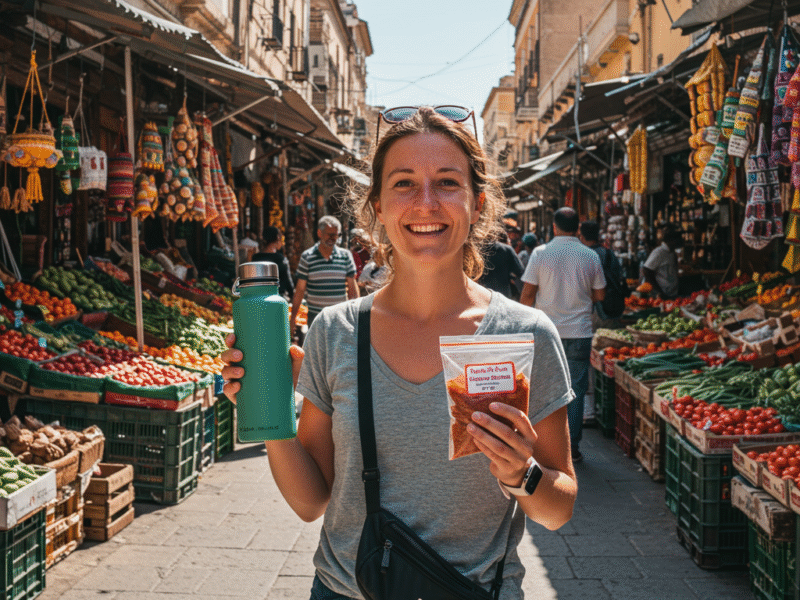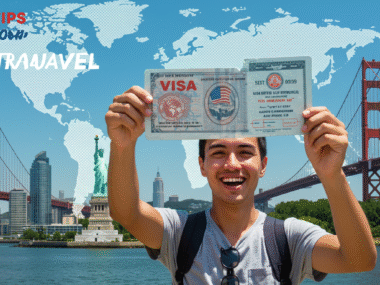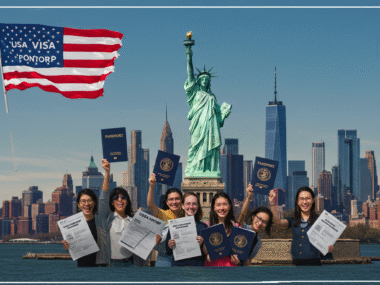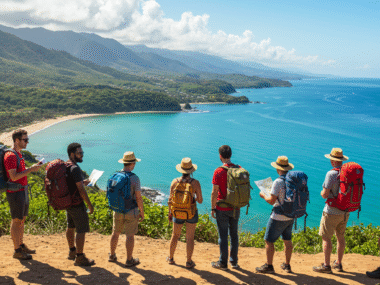Imagine jetting off to a sun-drenched beach in Thailand or wandering the historic streets of Rome without draining your bank account—it’s totally possible if you play your cards right. Traveling abroad doesn’t have to mean splurging on every little thing; with some smart strategies, you can stretch your dollars further and create memories that last a lifetime. Whether you’re a backpacker on a shoestring budget or a family looking for affordable adventures, saving money while exploring new countries is all about planning ahead, making wise choices, and embracing a bit of flexibility. In this guide, we’ll dive into practical tips that cover everything from booking cheap flights to finding budget-friendly eats, all while keeping things fun and stress-free.
Let’s start with the basics: why bother saving money on travel? Well, for starters, it means you can travel more often or stay longer in your dream spots. I’ve been on trips where a few clever hacks turned a potentially expensive vacation into something super affordable, like scoring a last-minute deal on accommodations or eating like a local without breaking the bank. The key is to think like a savvy traveler—someone who knows how to spot deals, avoid tourist traps, and make every penny count. By the end of this article, you’ll have a toolbox full of ideas to help you travel smarter, not harder.
Read Also:
- Best Travel Destinations for Students on a Budget in 2025
- How to Plan a Perfect Vacation Without Spending Too Much
Planning Your Trip on a Budget
The foundation of any money-saving travel adventure is solid planning. Jumping into a trip without research is like throwing cash out the window. Start by picking destinations that won’t empty your wallet. Places like Southeast Asia, Eastern Europe, or parts of Latin America often offer incredible value compared to pricier spots like Western Europe or Australia. For example, Vietnam or Poland can give you stunning landscapes, rich culture, and delicious food at a fraction of the cost of France or Japan.
When researching, use free online tools to compare costs. Websites like Numbeo or Budget Your Trip let you see average prices for meals, transport, and lodging in different cities. I once planned a trip to Portugal by checking these sites and realized Lisbon was way cheaper than Paris for similar vibes. Factor in the time of year too—off-season travel can slash prices by up to 50%. Shoulder seasons, like spring or fall, often mean fewer crowds and better deals on everything from flights to hotels.
Speaking of flights, booking cheap flights is a game-changer for international travel. Airlines like Ryanair, EasyJet, or budget carriers in Asia such as AirAsia can get you across borders for peanuts if you book early. Aim to reserve tickets 2-3 months in advance for the best rates, but keep an eye out for flash sales. Tools like Google Flights or Skyscanner are your best friends here—they let you set price alerts and explore flexible dates. I remember snagging a round-trip from New York to London for under $400 by flying mid-week and being open to layovers.
Don’t forget about alternative airports. Flying into a smaller hub nearby and taking a train or bus to your destination can save hundreds. For instance, instead of landing directly in Paris, consider Beauvais Airport and hopping on a cheap shuttle. Also, consider multi-city itineraries if you’re visiting several places; sometimes it’s cheaper than separate bookings.
Next up: finding affordable accommodations. Hotels aren’t the only option—think hostels, Airbnb, or even couchsurfing for free stays with locals. Hostels have come a long way; many offer private rooms at budget prices with kitchens to cook your own meals. In cities like Berlin or Bangkok, you can find clean, comfy spots for $20-30 a night. For families or groups, vacation rentals through Vrbo or Booking.com often work out cheaper per person than hotels, especially if you split costs.
To score deals, book directly with properties when possible to avoid booking fees, or use promo codes from sites like Hotels.com. Loyalty programs can help too—join chains like Marriott or Hilton for points that lead to free nights. If you’re adventurous, try house-sitting platforms like TrustedHousesitters, where you watch someone’s home in exchange for free lodging. It’s a win-win: you save money, and they get peace of mind.
Visas and entry fees are another planning pitfall. Some countries charge hefty visa fees, so check requirements early via official government sites. Countries like Turkey or India offer e-visas that are quick and cheaper than embassy visits. Budget for any tourist taxes too, like the ones in Venice or Bali, which add up if you’re not prepared.
Packing Smart to Save Cash
Packing might not seem like a money-saver, but trust me, it is. Overpacking leads to extra baggage fees, which can add $50-100 per flight on budget airlines. Stick to carry-on only if possible—most international flights allow a small suitcase and personal item for free. Invest in a lightweight, durable bag that fits airline specs, like those from Osprey or Eagle Creek.
What to pack? Essentials that prevent unnecessary buys abroad. Bring versatile clothing that mixes and matches—think neutral colors and layers for changing weather. A good pair of walking shoes saves you from buying replacements mid-trip. Don’t forget reusable items like a water bottle with a filter (to avoid buying bottled water), a universal adapter, and snacks for long journeys.
Medications and toiletries are pricier overseas, so pack what you need. If you’re heading to Europe, remember voltage differences might fry your electronics without a converter. For tech, a portable charger keeps your phone alive without hunting for cafes with outlets. And always pack copies of important documents—passport, insurance, bookings—in a waterproof pouch.
One hack I love: use packing cubes to organize and compress clothes, fitting more into less space. This way, you avoid checked bags altogether. If you must check luggage, weigh it at home to dodge surprise fees at the airport.
Getting Around Without Spending a Fortune
Once you’re abroad, transportation can eat into your budget fast if you’re not careful. Taxis and rideshares like Uber are convenient but costly in tourist areas. Instead, embrace public transit—buses, trains, and subways are often cheap and efficient. In cities like Tokyo or London, day passes or multi-ride cards save big over single tickets.
For longer distances, trains are scenic and affordable in Europe via Eurail passes, or buses in South America through companies like Andesmar. Overnight options double as transport and lodging, cutting hotel costs. I took an overnight bus from Cusco to Lima in Peru and saved on a night’s stay while waking up refreshed.
Renting a car? Only if necessary, as gas, tolls, and insurance add up. In places like New Zealand, it’s worth it for freedom, but compare rates on Kayak or Auto Europe. Stick to manual transmissions if you’re comfortable—they’re cheaper in many countries.
Biking or walking is free and lets you see more. Cities like Amsterdam or Copenhagen have bike-sharing programs for pennies. Apps like Citymapper help navigate public options in real-time.
For islands or remote spots, ferries beat flights. In Greece, island-hopping by boat is budget-friendly and adventurous. Always book transport in advance for discounts, especially during peak times.
Eating Well on a Shoestring Budget
Food is one of the joys of travel, but restaurant bills can pile up. The secret? Eat like a local. Street food stalls in places like Mexico City or Bangkok offer tasty, authentic meals for $2-5. Markets are goldmines—grab fresh produce, cheese, and bread for picnics that cost next to nothing.
Cook your own meals if your accommodation has a kitchen. Grocery stores like Tesco in the UK or Carrefour in France have affordable staples. I whipped up pasta dinners in Italy using local ingredients, saving tons compared to dining out every night.
Avoid touristy areas for meals; walk a few blocks off the main drag for cheaper spots with better food. Apps like HappyCow for vegetarian options or TripAdvisor for reviews help find hidden gems. Happy hours and lunch specials are your allies—many places offer deals during off-peak times.
Water and drinks? Tap water is safe in many countries, but if not, use a purifying straw to refill bottles. Skip fancy coffees; local brews are cheaper and more cultural. In Asia, tea is often free with meals.
For special occasions, splurge wisely—maybe one fancy dinner per trip, balanced by budget eats the rest of the time.
Discovering Free and Low-Cost Activities
Who says fun has to be expensive? Many of the best experiences abroad are free. Walking tours in cities like Prague or Buenos Aires are tip-based, so you pay what you can afford. Museums often have free entry days—check schedules for places like the Louvre or Smithsonian affiliates overseas.
Parks and beaches are always gratis. Hike in national parks like those in Costa Rica or chill on sands in Portugal. Festivals and markets provide entertainment without tickets; think Diwali in India or Christmas markets in Germany.
Volunteering through Workaway or WWOOF lets you exchange work for room and board, plus cultural immersion. I helped on a farm in New Zealand and got free stays while learning about Maori culture.
Paid attractions? Look for combo tickets or city passes that bundle sights, like the Rome Pass or New York CityPASS. Skip overpriced tours; self-guide with apps like Rick Steves’ audio tours.
Outdoor adventures on a budget: snorkeling with your own gear in Thailand or cycling tours in Vietnam. Nature is the ultimate free playground.
Managing Your Money and Currency Wisely
Handling cash abroad can lead to hidden fees if you’re not smart. First, notify your bank of travel plans to avoid card blocks. Use credit cards with no foreign transaction fees, like Chase Sapphire or Capital One Venture—these save 3% per purchase.
ATMs? Choose ones from major banks to avoid extra charges, and withdraw larger amounts less often. Apps like XE Currency help track exchange rates for the best deals.
Prepaid travel cards like Revolut or Wise let you load money in advance and lock in rates, plus they’re safer than carrying cash. In countries with volatile currencies, like Argentina, this is a lifesaver.
Budget tracking: Use apps like Trail Wallet or Splitwise to monitor spending. Set daily limits—say $50 for food and activities—and stick to them.
Haggling is key in markets from Morocco to Mexico. Start low, be polite, and walk away if needed—it often brings prices down.
Staying Healthy and Insured Without Overspending
Health mishaps can ruin a budget, so travel insurance is non-negotiable. Policies from World Nomads or Allianz cover medical, theft, and cancellations for as little as $50-100 per trip. Compare on InsureMyTrip for the best fit.
Pack a basic first-aid kit to handle minor issues without doctor visits. Stay hydrated, eat balanced, and get vaccinations early—some are free via public health clinics.
If you get sick, local pharmacies are cheaper than hospitals for over-the-counter meds. In Europe, EU health cards offer free care for citizens, but for others, insurance bridges the gap.
Mental health matters too—budget for downtime to avoid burnout, which might lead to impulsive spending.
Smart Shopping and Souvenir Strategies
Souvenirs don’t have to be pricey trinkets. Opt for practical items like spices from India or scarves from Turkey that you’ll actually use. Shop at local markets over tourist shops for better prices.
Duty-free? It’s not always a deal—compare prices first. For big purchases, check tax refunds in countries like Japan or the EU via Global Blue.
Avoid impulse buys; make a list of what you really want. Shipping home is cheaper than excess baggage fees.
Dodging Scams and Hidden Costs
Scams target tourists, so stay vigilant. Common ones: fake taxis charging double or “helpful” strangers leading you to overpriced shops. Use official apps for rides and read reviews.
Hidden costs like roaming data—get a local SIM or eSIM from Airalo for cheap connectivity. Wi-Fi is everywhere, so rely on that.
Tipping varies by country; over-tipping wastes money. Research norms—none in Japan, 10-15% in the US-style places.
Wrapping It Up: Your Path to Affordable Adventures
Saving money while traveling abroad boils down to mindset: prioritize experiences over extravagance. With these tips, you’ll return home with a full heart and a fuller wallet, ready for the next trip. Remember, the best travels are those where you connect with places and people, not just spend.
For more travel tips, check out this budget travel guide or explore affordable deals on flight search tools.











